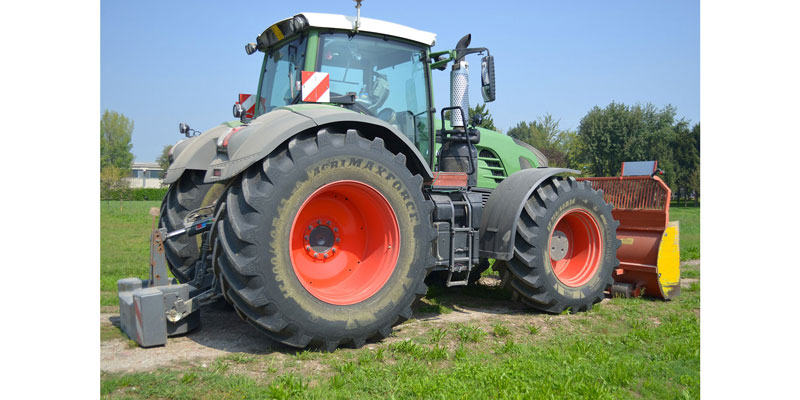
Before tilling, planting and spraying begins, there are many things that can be done to minimize equipment problems and downtime in the spring to ensure maximum performance. Downtime costs time and money, so it is important to prepare equipment and tires properly before the busy season arrives.
Tires should be checked for any visible damage, including cracks, cuts, bulges or leaks. It is also important to check tread depth to be sure that the tire has more than 20-25% tread for maximum performance. Although there is no cut and dry way to determine when it is time to replace tires based on tread depth, as tire lugs wear down, they can start to slip excessively, thus increasing fuel costs and time because of the increased strain on the machinery. If the tire seems to be pushing dirt back behind it further than normal, there is a good chance there is too much slippage. If there is any possibility for failure, it is recommended to replace the tires before the equipment is put back in use.
Be sure to check the wheels to make sure the lug nuts are tightened to the correct specifications. Check all of the bolts for the wheel weights to ensure that they are on tight. Tires and wheels should be cleaned of mud, sticks and rocks from the lugs, and make sure there is no dirt left on the rims and weights. Store the equipment free of debris so that it is ready for use.
It is very important that tires are inflated to the maximum inflation pressure that the manufacturer recommends. Air temperatures can cause air pressures to move up and down during the months when the equipment is not in use. In the cold weather, air pressures tend to decrease and can cause the tires to go flat if they are not inflated enough. This can lead to the sidewalls being damaged from the rim sitting on them. It is suggested to check tire pressure periodically while the equipment is being stored in order to ensure they do not go flat. After storage, be sure to set the air pressure at the recommended pressures for the weight carrying capacity of the tractor and equipment. This will decrease the chance of tire damage and minimize soil compaction in the fields.
If possible, it is best to store equipment in a cool, dry place to keep the sun, wind, rain and snow from weathering the tractor and tires. Ozone in the air and excessive sunlight can cause the rubber in the tires to age prematurely, decreasing the maximum life and performance. It is also best to keep rubber products away from electric motors, oils, fuels and resins, as these can also damage the rubber compounds, causing them to deteriorate over time. If the equipment will be sitting for several months at a time, it is best to not park the tires on rocks or asphalt, as they can damage them and cause loss of air pressure. If a tractor must be left outside, cover the tires with a tarpaulin to avoid contact with ultraviolet rays and inclement weather.
If changing a tire is necessary, it is important to be sure to choose the tires that are best for the application it is being used in. Dependent on the type of crop, different compounds may be needed to ensure an ultimate return on investment. What works well and improves the application in one area may cause problems and failures in another. If your crop is filled with hard stalks and stubble, be sure to choose tires with special compounds designed to prevent damage and better handle the abuse. If soil compaction and increased load weights are a concern, new inflation technology in tires would be beneficial. It is important to learn which tires are best for the crops and equipment being used. Local dealers and tire manufacturers are great sources to help with any questions or concerns.
There are many things that can be done to ensure agricultural equipment and tires are protected and ready for the upcoming planting and harvests. Following these steps can help maximize both time and money for the best return on investment.
Source: Information provided by BKT USA.













